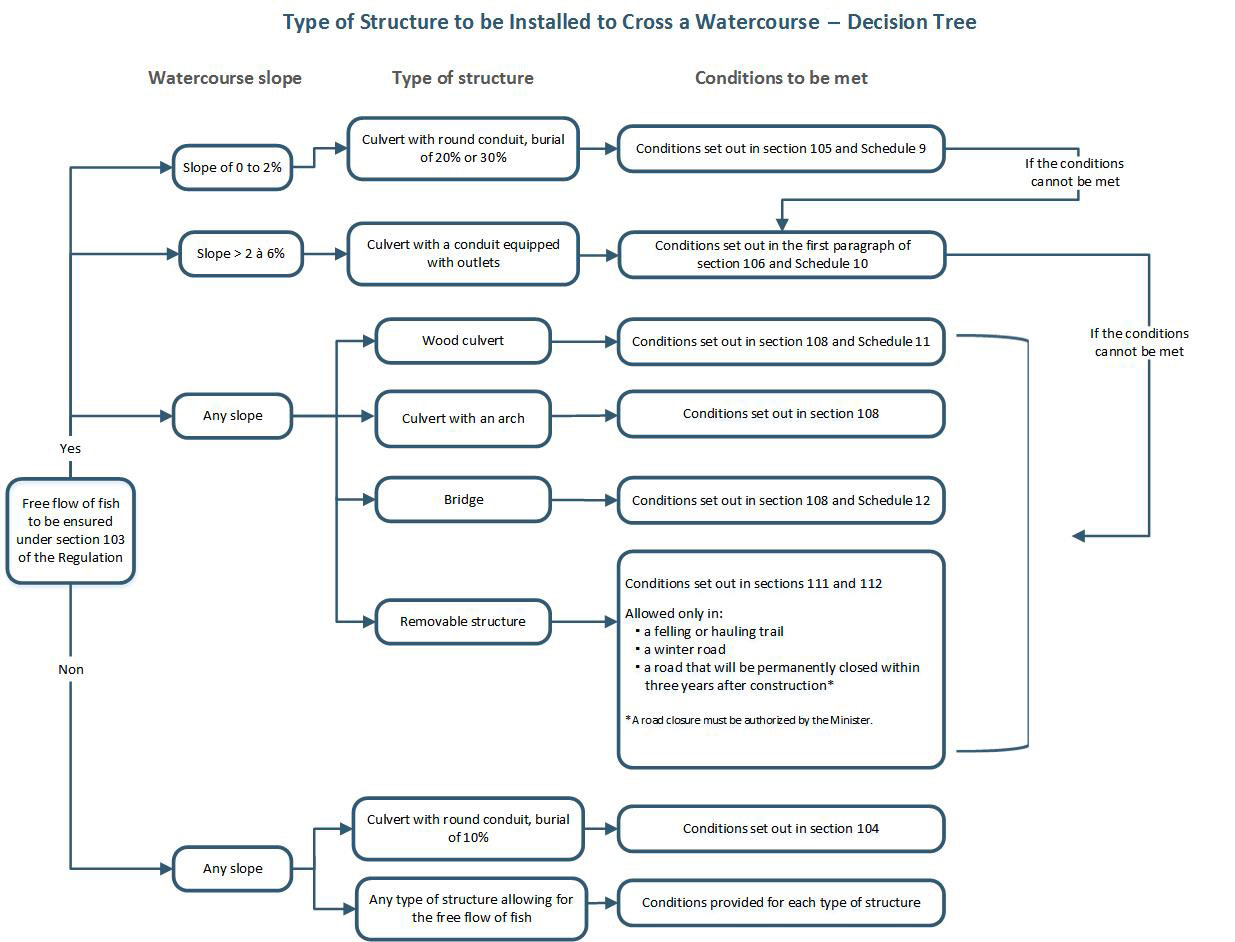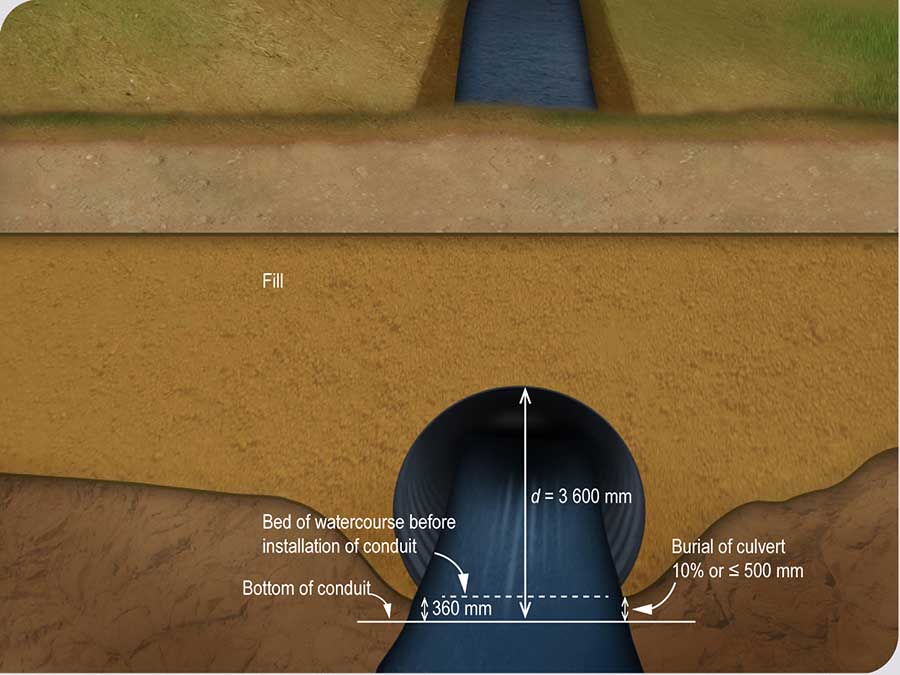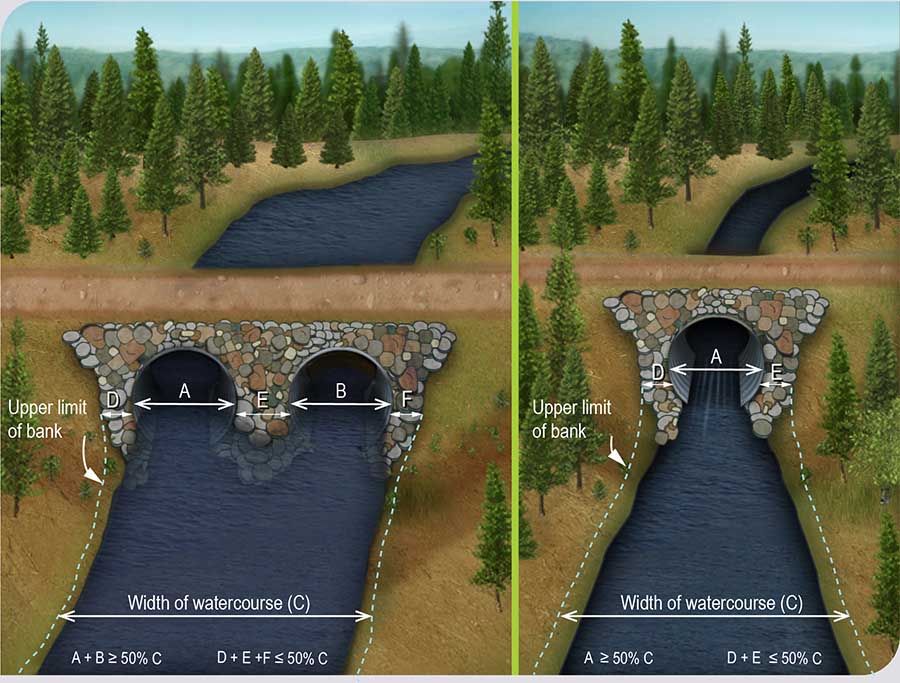Chapter V – Roads, sandpits and forest infrastructures
Division III – Bridge, culverts, removable structures and rudimentary structures
§4. General provisions applicable to bridges or culverts
Section 104

1
Additional information
The decision tree below can be used to decide on the type of structure that must be installed to cross a watercourse.
On crossing sites where the free flow of fish needs not be ensured by reason of the presence of any of the situations described in section 103, the installation of the culvert must meet the following conditions:
- the diameter or span of the conduit or arch must be at least 450 mm;

2
Objectives
- To ensure the free flow of water
- To ensure the lifespan of a road, bridge or culvert
Additional information
How is the width of a watercourse measured?
The width of a watercourse is calculated using the average of at least four representative measurements of the natural watercourse taken upstream and downstream of the crossing site. If there are signs of narrowing or widening, the section in question (e.g. area disturbed by a beaver dam) must be excluded. The width is measured at the level of the upper limit of the banks. The method used to identify the upper limit is shown in the definition of “bank”.
- the conduit must be installed following the natural slope of the watercourse and be buried under the bed of the watercourse at a depth equivalent to 10% the height of the conduit, without exceeding 500 mm regardless of the size of the conduit;

3
Objectives
- To avoid formation of a vertical fall at the culvert outlet
- To ensure the free flow of water
- To ensure the lifespan of a road, bridge or culvert
Additional information
If, at the time of construction, it is not possible to bury the conduit 10% of its height due to the presence of bedrock that was not visible prior to the work, it must be installed so as to bury it as much as possible. In these situations, no waterfall shall be created in or out of the conduit.
Figure 104A Burial of a culvert conduit in the bed of a watercourse where it is not necessary to ensure the free flow of fish
- the culvert may not reduce the width of the watercourse by more than 50%, measured from the upper limit of the banks.

4
Objectives
- To ensure the free flow of water
- To ensure the lifespan of a road, bridge or culvert
- To avoid scouring of the watercourse
Additional information
How is the width of a watercourse measured?
The width of a watercourse is calculated using the average of at least four representative measurements of the natural watercourse taken upstream and downstream of the crossing site. If there are signs of narrowing or widening, the section in question (e.g. area disturbed by a beaver dam) must be excluded. The width is measured at the level of the upper limit of the banks. The method used to identify the upper limit is shown in the definition of “bank”.
Figure 104B Maximum reduction of the width of a watercourse where it is not necessary to ensure the free flow of fish
On a crossing site where the free flow of fish need not be ensured, a culvert may include 1 smooth wall conduit or 2 in the case of parallel conduits. 
5
Objective
- To ensure the free flow of water



